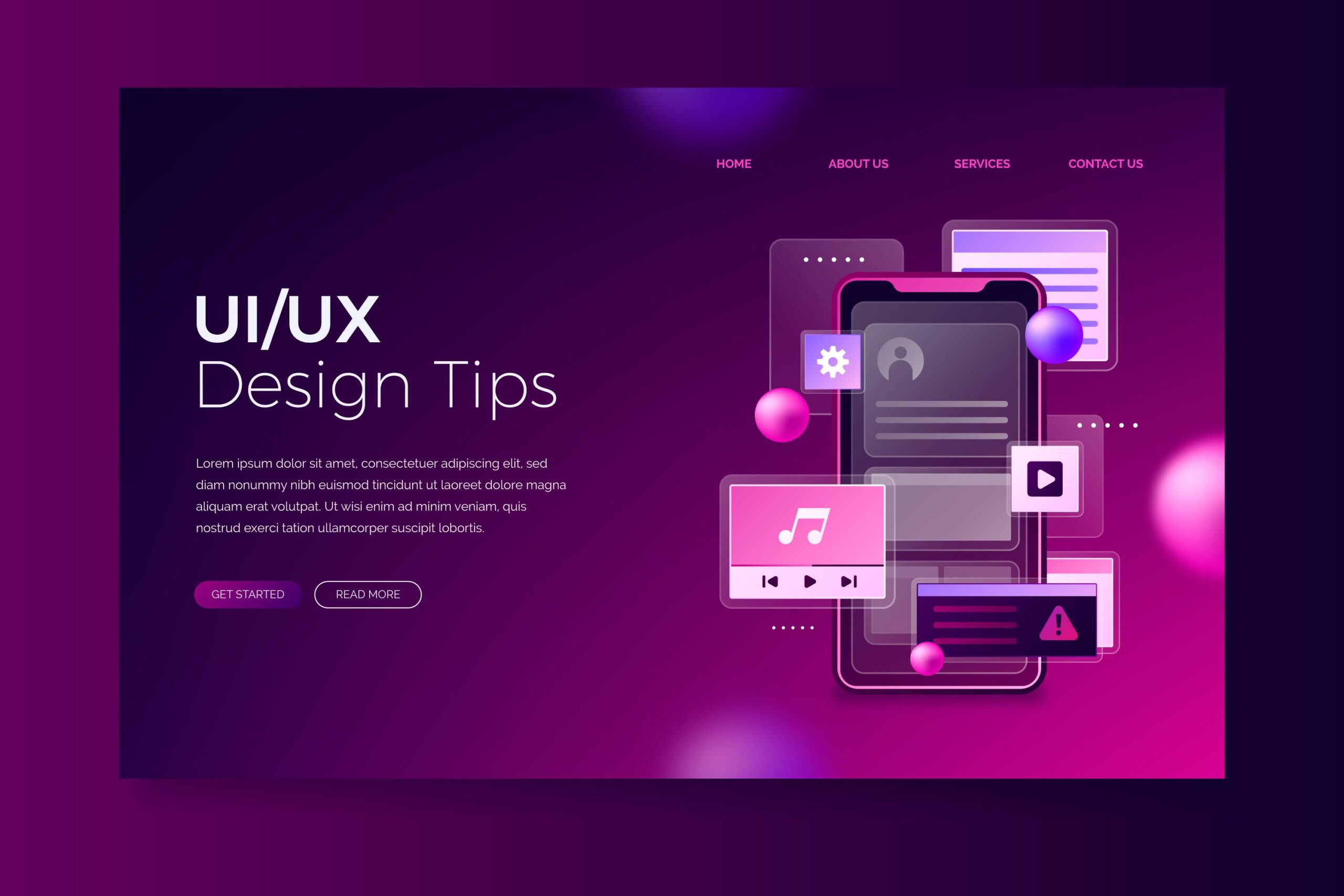
As we stand on the cusp of a new era in technology, the convergence of Artificial Intelligence (AI) and User Interface/User Experience (UI/UX) design is reshaping the digital landscape. This fusion is not just a trend but a necessary evolution to meet the expectations of tomorrow’s users. In this blog, we’ll explore how AI is transforming UI/UX design and provide insights on future-proofing your web and mobile apps.
The AI Revolution in UI/UX Design
AI is no longer just a buzzword; it’s becoming an integral part of how we design and interact with digital products. From personalized user experiences to predictive interfaces, AI is enhancing every aspect of UI/UX design.
1. Personalization at Scale
AI algorithms can analyze user behavior, preferences, and context to deliver highly personalized experiences. This goes beyond simple customization options. Imagine an app that adjusts its interface based on the user’s habits, time of day, or even emotional state. AI-driven personalization ensures that each user feels the app was designed specifically for them.
2. Predictive UI
Predictive interfaces use machine learning to anticipate user needs and actions. This could mean pre-loading content, suggesting next steps, or even automating repetitive tasks. By reducing cognitive load and streamlining interactions, predictive UI creates a more intuitive and efficient user experience.
3. Natural Language Processing (NLP) and Conversational UI
As NLP technology advances, conversational interfaces are becoming more sophisticated. Chatbots and voice assistants are evolving from simple command-response systems to nuanced, context-aware conversational partners. This shift is blurring the lines between graphical and conversational interfaces, opening up new possibilities for interaction design.
4. Adaptive Design Systems
AI can help create dynamic design systems that adapt in real-time. These systems can adjust typography, color schemes, and layouts based on user preferences, accessibility needs, or environmental factors like lighting conditions.
5. Intelligent Accessibility
AI is revolutionizing accessibility in digital products. From real-time captioning to dynamic content simplification for users with cognitive disabilities, AI-powered tools are making apps more inclusive than ever before.
Future-Proofing Strategies
To prepare your web and mobile apps for the AI-driven future of UI/UX design, consider the following strategies:
1. Embrace Data-Driven Design
Collect and analyze user data ethically to inform your design decisions. AI thrives on data, and the more quality data you have, the better your AI-enhanced features will perform. Implement robust analytics and user feedback systems to continuously improve your understanding of user behavior and preferences.
2. Implement Modular, Flexible Architectures
Design your apps with modularity in mind. This allows for easier integration of AI components and faster iteration as technology evolves. A flexible architecture also enables your app to adapt to different devices and platforms more easily.
3. Focus on Core User Needs
While AI can offer exciting new features, it’s crucial to keep the focus on solving real user problems. Use AI to enhance, not complicate, the user experience. Always ask: Does this AI feature genuinely improve the user’s ability to achieve their goals?
4. Prioritize Transparency and User Control
As AI becomes more prevalent in UI/UX, it’s essential to maintain transparency about how AI is being used and give users control over their data and AI-driven features. Build trust by clearly communicating how AI enhances the user experience and allowing users to opt in or out of AI-powered features.
5. Invest in Continuous Learning
The field of AI is rapidly evolving. Encourage your design and development teams to stay updated with the latest AI trends and technologies. Consider partnerships with AI specialists or investing in AI training for your team.
Challenges and Considerations
While the future of AI in UI/UX design is exciting, it’s not without challenges:
- Privacy Concerns: As AI requires data to function effectively, balancing personalization with user privacy will be an ongoing challenge.
- Overreliance on AI: There’s a risk of becoming too dependent on AI, potentially stifling human creativity in design. It’s crucial to use AI as a tool to augment human designers, not replace them.
- Ethical Implications: As AI becomes more advanced, we must grapple with ethical questions about autonomy, decision-making, and the role of AI in society.
- Technical Limitations: While AI is advancing rapidly, there are still limitations in terms of processing power, especially on mobile devices. Designers must consider performance implications when implementing AI features.
- User Trust: Building and maintaining user trust in AI-driven interfaces will be crucial. Transparency, user control, and consistent performance will be key factors in earning this trust.
Conclusion
The intersection of AI and UI/UX design represents a paradigm shift in how we create and interact with digital products. By embracing AI technologies, focusing on user needs, and designing with flexibility and ethics in mind, we can create web and mobile apps that not only meet the expectations of the next generation of users but exceed them.
As we move forward, the most successful apps will be those that seamlessly blend AI capabilities with intuitive, user-centered design. They will anticipate user needs, adapt to individual preferences, and offer experiences that feel both magical and natural.
The future of UI/UX design is not just about creating interfaces; it’s about crafting intelligent, responsive environments that enhance human capabilities and enrich our digital lives. By staying informed, embracing innovation, and always putting the user first, we can create digital experiences that stand the test of time in this rapidly evolving technological landscape.
Devoq Design is a leading UI/UX design agency with a strong presence in both South Dakota and Tennessee. As a premier UI/UX design agency in South Dakota, Devoq Design specializes in crafting visually compelling and user-friendly digital experiences tailored to the unique needs of local businesses. Similarly, as a top UI/UX design agency in Tennessee, Devoq Design excels in delivering innovative design solutions that enhance user interaction and satisfaction. With a team of expert designers committed to excellence, Devoq Design ensures that each project is customized to meet the specific requirements of their diverse clientele, driving growth and success in both states.







